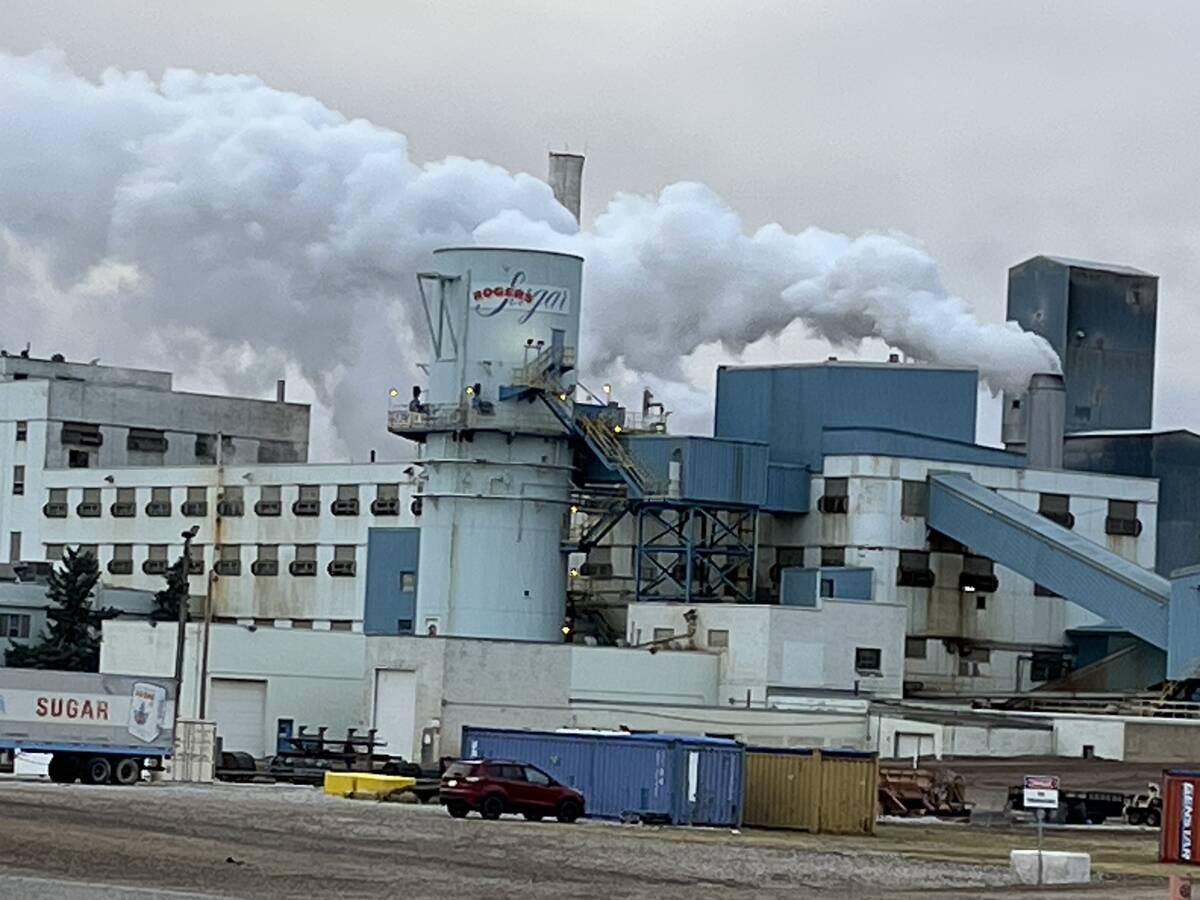WHITE CITY, Sask. — Micronutrient deficiencies rarely cause huge yield losses, but soil scientist Jeff Schoenau says the elements are still essential for a healthy crop.
The University of Saskatchewan researcher recently used copper uptake as an example at the recent Indian Head Agricultural Research Foundation crop management seminar. He said copper uptake is only a few grams per acre but plays a critical role in plant development.
He said micronutrients can be mysterious. Deficiencies show up and then disappear and the symptoms can be easily confused with other types of plant stress.
Read Also

Sugar beet harvest underway in southern Alberta
Alberta Sugar Beet Growers hosts field tour to educate the public on the intricacies of the crop, its harvest process, and contracts with Lantic Sugar
Often, combinations of soil and environmental conditions result in the deficiency.
Schoenau said producers should use soil tests, tissue tests and visual inspection to find out for sure.
“Misjudgment can be expensive,” he said, noting some of the elements aren’t cheap.
“In the case of some of those micronutrients, if you apply too much you can end up with toxicity issues.”
The micronutrients of main concern are copper, zinc, manganese, iron, boron and chlorine.
“In Saskatchewan, it’s the sandy grey soils in the northern agricultural fringe that tend to have the greatest frequency of true micronutrient deficiencies,” Schoenau said.
The deficiencies show up in patches throughout most of the grain belt, often in eroded areas and on knolls.
Copper deficiency is the most likely to arise, particularly in western Sask-atchewan and into Alberta, and shows up most commonly in cereal crops. It is identified by a symptom known as pigtailing, in which the ends of the leaves will pinch off and curl or twist.
Copper is needed for enzyme activation, hormone regulation and energy reactions in the plant. It can also play a role in disease resistance.
Schoenau said a lack of copper may aggravate ergot infection because the floret stays open longer and increases the potential for the ergot spore to get into the plant.
“That’s not to say you can cure an ergot problem by the application of copper,” Schoenau said.
Research done in the Porcupine Plain area of east-central Saskatchewan found that wheat did not re-spond to soil-applied copper, but a foliar application resulted in a large yield benefit.
Boron is important for cell division, cell wall extension, reproduction, pollination and development at the growing tips of plants. Schoenau said curling of leaves, particularly the young leaves, could indicate a boron deficiency. However, it can also look like a lack of sulfur.
Canola and alfalfa crops are most susceptible to a lack of boron.
Schoenau said research has shown that large yield responses to added boron are rare in Western Canada. Experiments in growth chambers under controlled conditions didn’t provide statistically significant yield benefits, he added.
“Even on soils with very low extractable boron content, no significant responses to canola from boron application have been observed or reported,” he said.
Schoenau cautioned that there is a fine line between boron deficiency, sufficiency and toxicity. Over-applying it can cause problems.
Last year, researchers examined whether adding boron could reduce the incidence of clubroot.
The work was done in Alberta, Ontario and Quebec on soil infected with the disease, and researchers found that the micronutrient had no effect.
“Nor did they find that the boron had any significant effect on the yield of the canola, except on one organic soil in Ontario,” Schoenau said.
Adding zinc to cereal crops can increase yields. Zinc, like copper and manganese, is involved in electron transport and other physiological functions.
“Soil-applied zinc sulfate seems to be quite susceptible to fixation,” Schoenau said, which doesn’t make it effective in some prairie soils.
A study done three years ago on yield response to zinc in lentils found positive results. On the other hand, some soils that were already high in zinc led to a negative response.
Schoenau said this makes it hard to predict what zinc will do. However, if it is to be applied, it should be foliar rather than in the soil.
Chloride controls cell water entry and exit and maintains a charge balance, Schoenau said. It may also play a role in disease resistance, particularly root rot and leaf spot diseases.
“There is potential, I think, for response of cereals in highly leached soils that are low in extractable chloride,” he said.
He said the use of more potash in fertilizer blends is reducing the incidence of deficiency.
As well, 90 percent of the chloride is in the straw, so much of it is left behind at harvest.
Manganese deficiencies are rare in southern Saskatchewan, and iron deficiencies are also almost unheard of, except that soybeans can be susceptible. It appears as inter-veinal chlorosis, or yellowing. The veins will stay green but the leaf tissue will turn yellow.
High pH levels, poor drainage, salinity and high nitrate content can aggravate iron deficiency. Schoenau said soybean varieties vary, and producers who are concerned about it should select varieties that will do better under low iron conditions.















